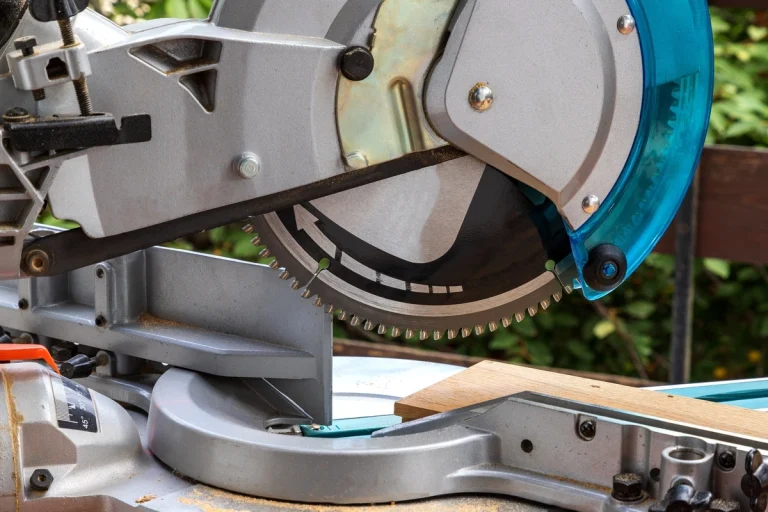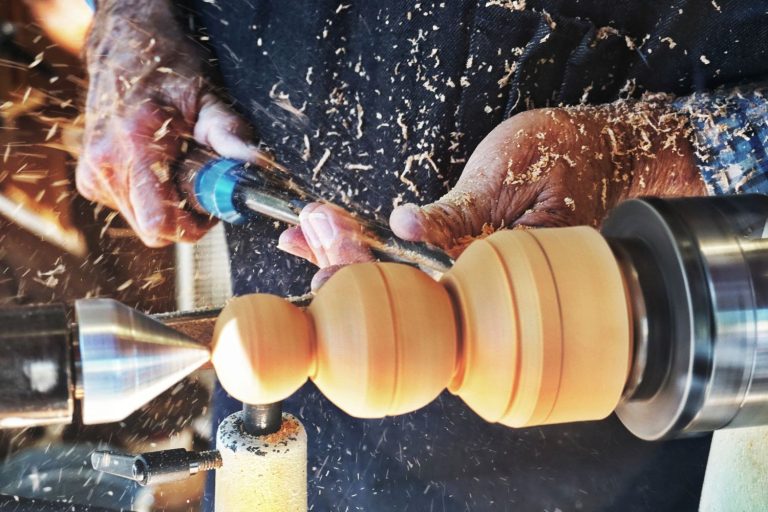Best Cordless Reciprocating Saw – Cut to the Chase
Are you looking for a saw that packs power, precision, and portability into one handy tool?
If your answer is yes, then it looks like you need the best cordless reciprocating saw on the market!
This ultra-versatile little dynamo has been relied upon by DIYers and professionals alike for years to cut through nearly anything.
Nowadays, finding the right model at a good price point can be a bit head-scratching – but fear not!
We’re here to help guide you down the winding path and make sure you end up with exactly what fits your needs.
So let’s cut to the chase and check out some of our top picks in search of your perfect partner in crime!
How We Choose the Best Cordless Reciprocating Saws
We scoured the vast landscape of the internet, braving the treacherous waters of Amazon reviews and the rocky terrain of technical specifications.
Armed with nothing but our wits and a strong love of power tools, we sifted through thousands of product reviews to find the cordless saws that truly stood out from the pack.
We compared features and specs, pored over performance data, and even consulted with a team of highly trained tool experts (who were definitely not just our parents pretending to know what they were talking about).
From standard cordless reciprocating saws to compact cordless reciprocating saws to one-handed cordless reciprocating saws, we checked them all.
After countless hours of research, we finally narrowed it down to the top cordless reciprocating saws on the market.
So fear not, fellow DIY enthusiasts, because we’ve done the hard work for you – and now you can sit back, relax, and let us guide you to the perfect saw for your next project.
Overall Winner – Best Cordless Reciprocating Saw
DEWALT 20V MAX Reciprocating Saw (DCS380B)
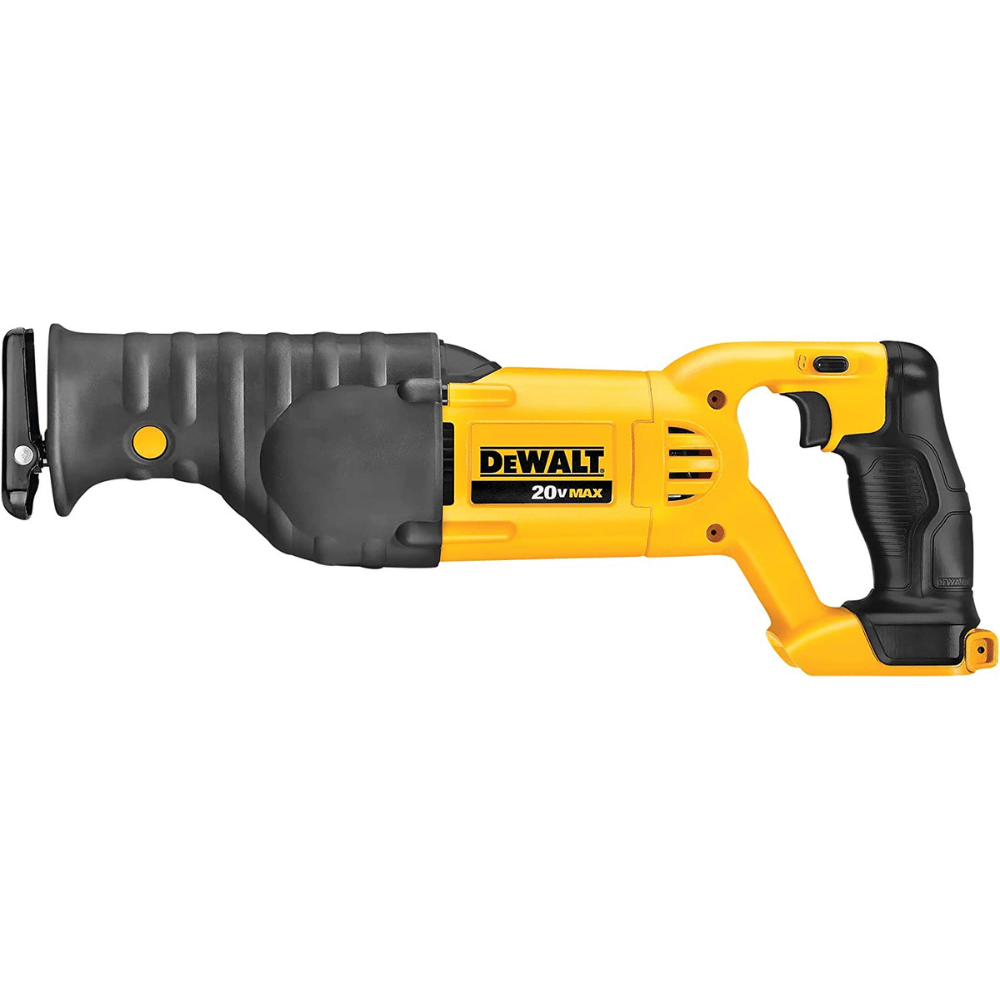
Key Features
- Uses DEWALT 20V Lithium-Ion battery (bare tool)
- 3,000 strokes per minute (SPM)
- 1-1/8″ stroke length
Why It’s a Great Choice
We all know it can be a chore to make long, awkward cuts – and that’s where the DEWALT Reciprocating Saw is your handy sidekick.
With 3,000 strokes per minute and a 1-1/8-inch stroke length, you can quickly whip through big jobs with ease – no matter how difficult they may be.
And don’t worry about changing blades, because the keyless lever-action 4-position blade clamp makes it quick and easy.
Even better?
The pivoting shoe extends blade life while giving you precise control over your cuts.
Plus, its double oil-sealed shaft resists contamination so you don’t have to replace it any time soon.
In conclusion, if you’re looking for an efficient and dependable tool to handle your tough cutting needs, the DEWALT Reciprocating Saw is the answer!
Most Durable Cordless Reciprocating Saw
Milwaukee M18 Fuel Sawzall Brushless Cordless Reciprocating Saw (2821-20)
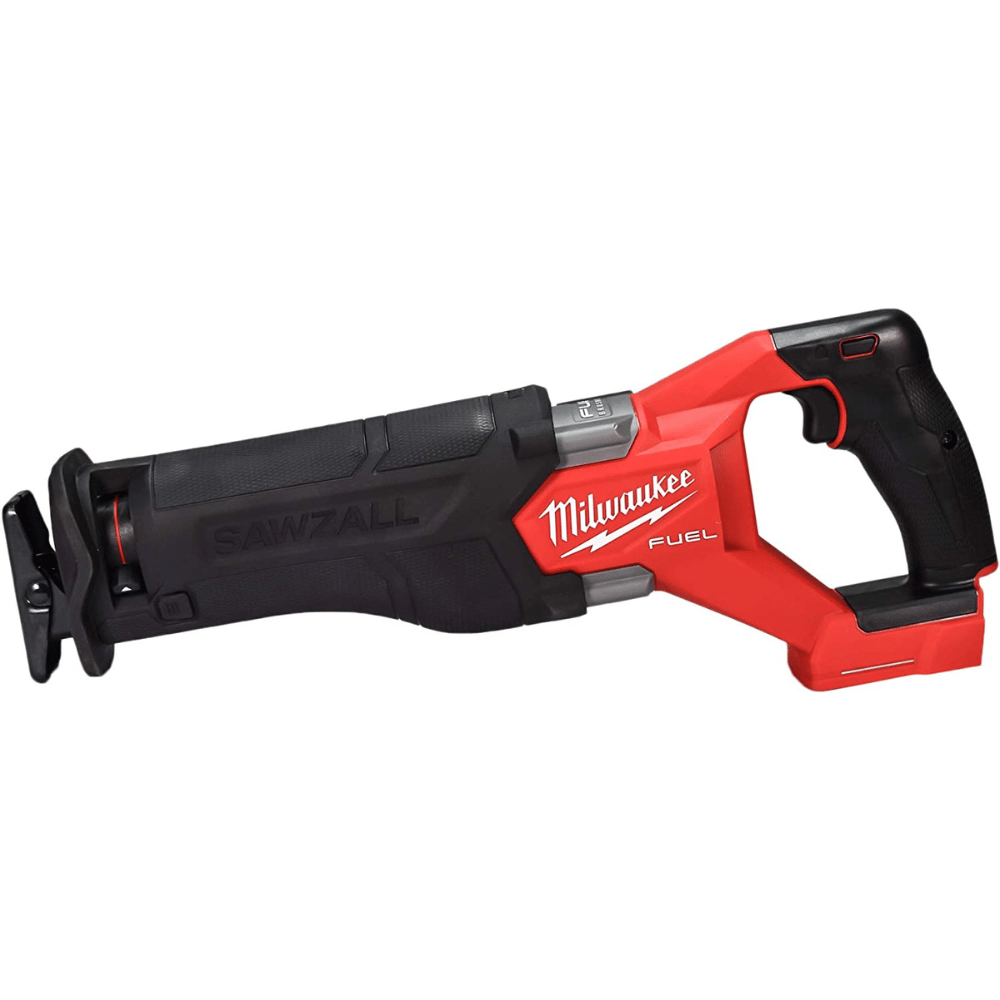
Key Features
- Uses Milwaukee 18V Lithium-Ion battery (bare tool)
- 3,000 SPM
- 1-1/4″ stroke length
Why It’s a Great Choice
Are you looking for a professional-grade reciprocating saw to make all of your projects easier and quicker?
Look no further than the Milwaukee M18 Fuel Sawzall Brushless Cordless Reciprocating Saw!
This robust little machine was designed with the toughest DIYers and professional tradespeople in mind, making quick work of any project.
Equipped with features like wear-resistant blade change, an anti-corrosion clamp, and a metal-reinforced battery connection, this SAWZALL can handle any job you throw at it.
It also boasts a POWERSTATE™ brushless motor that delivers 3,000 strokes per minute and a one-and-a-quarter-inch stroke length for fast cutting action.
The wear-resistant lever actuated QUIK-LOK™ blade clamp provides easy blade changes without slowing you down – no downtime means more projects done quickly!
Not to mention the REDLINK™ PLUS electronics protect the saw from overloading, overheating, and over-discharging.
Whether you’re doing a small weekend project or a big weeklong task, turn to the Milwaukee M18 Fuel Sawzall Brushless Cordless Reciprocating Saw: a powerhouse saw engineered specifically for pros and DIYers who want quality results without any fuss.
Best Cordless Reciprocating Saw on a Budget
BLACK+DECKER 20V MAX* Cordless Reciprocating Saw Kit (BDCR20C)
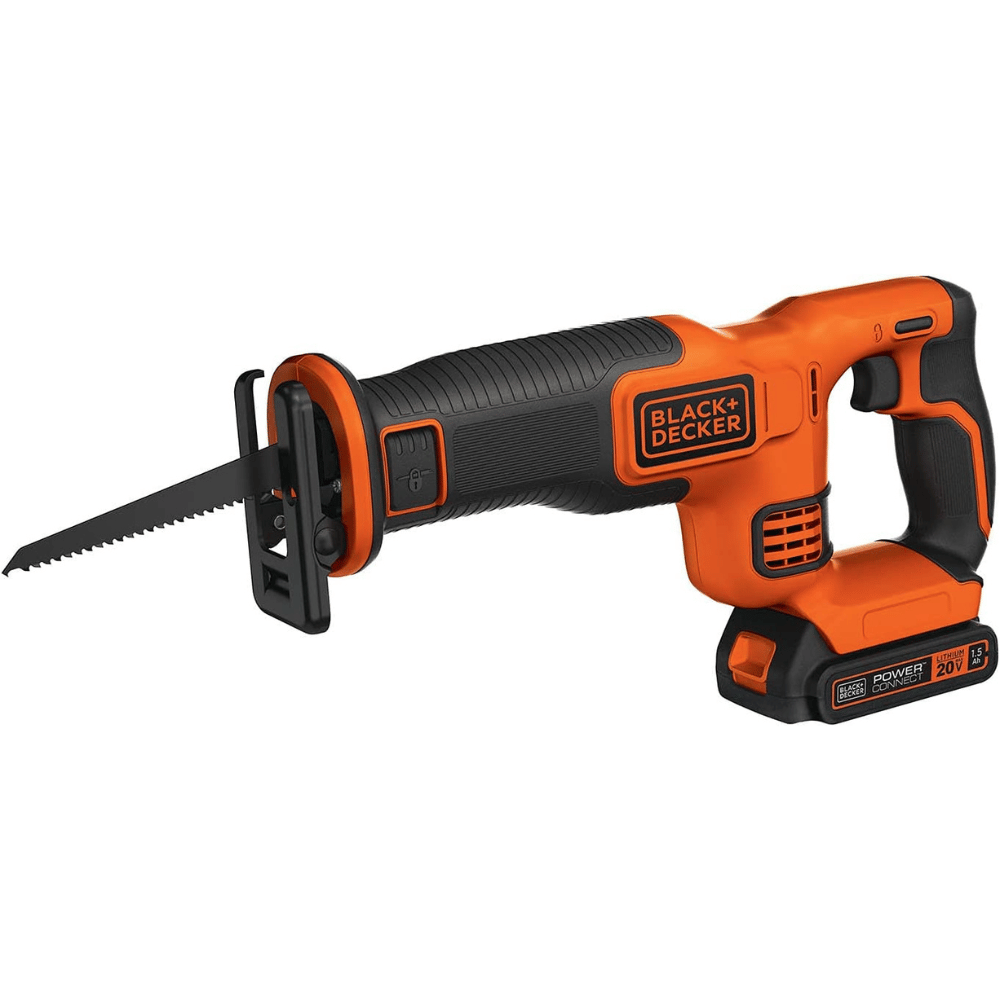
Key Features
- Uses BLACK+DECKER 20V Lithium-Ion battery (included)
- 3,000 SPM
- 7/8″ stroke length
Why It’s a Great Choice
The BLACK+DECKER 20V MAX* Cordless Reciprocating Saw Kit is the complete package for all your sawing needs.
With a variable speed trigger to provide cutting power of up to 3,000 SPM and safety features such as a built-in electrical brake, you’ll feel like a professional with this one-of-a-kind saw.
And with a tool-free blade change, you can quickly switch between blades in no time flat – there’s no need for extra tools!
Plus, the pivoting blade shoe enhances stability and gives you more control over turns and angles for precision cuts every time.
Get ready to cut through any job with ease!
Best Compact Reciprocating Saw
Greenworks 24V TruBrushless™ 1″ Compact Reciprocating Saw (RSG401)
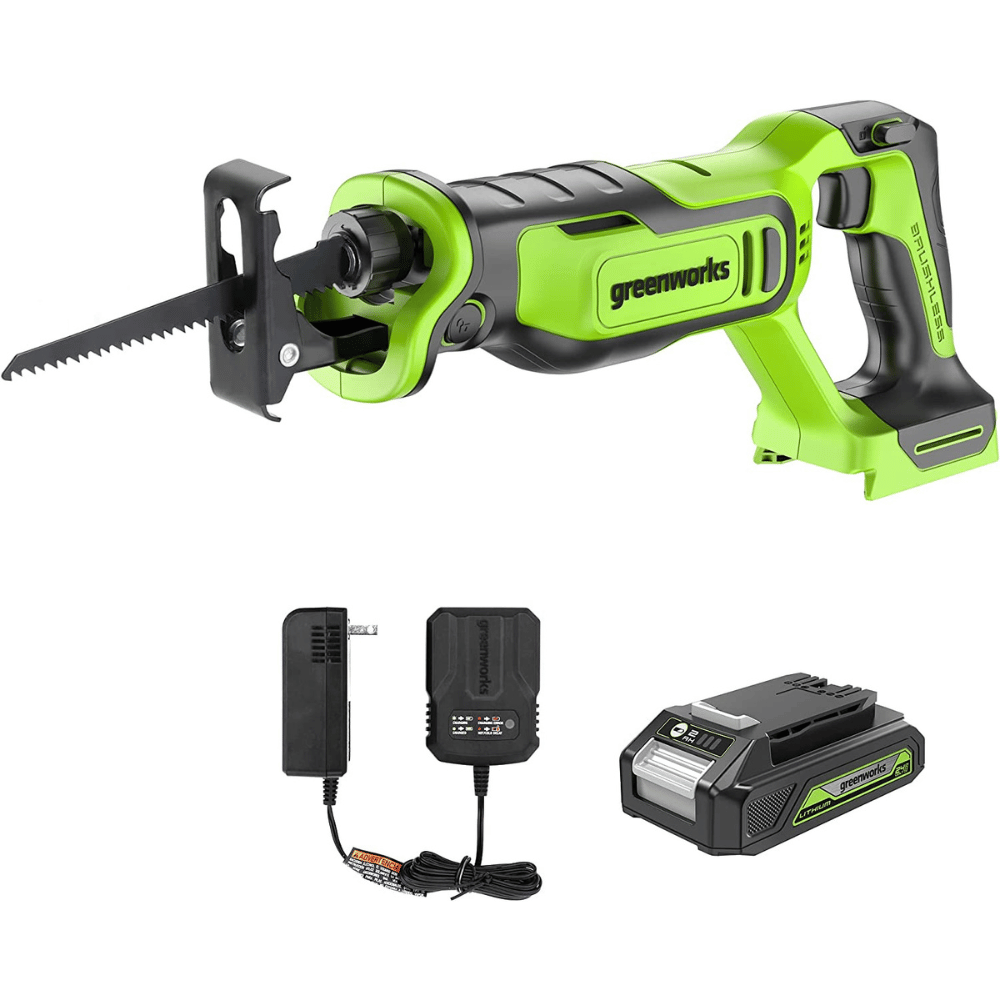
Key Features
- Uses Greenworks 24V Lithium-Ion battery (included)
- 3,000 SPM
- 1″ stroke length
Why It’s a Great Choice
Tackle any job with the Greenworks 24V TruBrushless™ 1″ Compact Reciprocating Saw.
Take on any DIY project without hesitation thanks to the high-efficiency brushless motor, which offers up to 50% more run-time and increased performance.
Enjoy the ultimate comfort while working in tight spaces with its slim and lightweight design, so you don’t have to worry about cramping your hands or not being able to reach.
The 24V lithium-ion battery provides 20% more power and 35% more run-time, as well as fade-free power with no memory loss after charging.
With a 1″stroke length that goes up to 0-3000 strokes per minute, along with variable speed abilities for cutting through a variety of materials, you’ll have everything you need right at your fingertips.
And if that wasn’t enough, the tool-free blade change system makes it easy for quick and easy reciprocating saw blade changes – how’s that for convenience?
Best One-Handed Cordless Reciprocating Saw
DEWALT ATOMIC 20V MAX* One-Handed Reciprocating Saw (DCS369B)
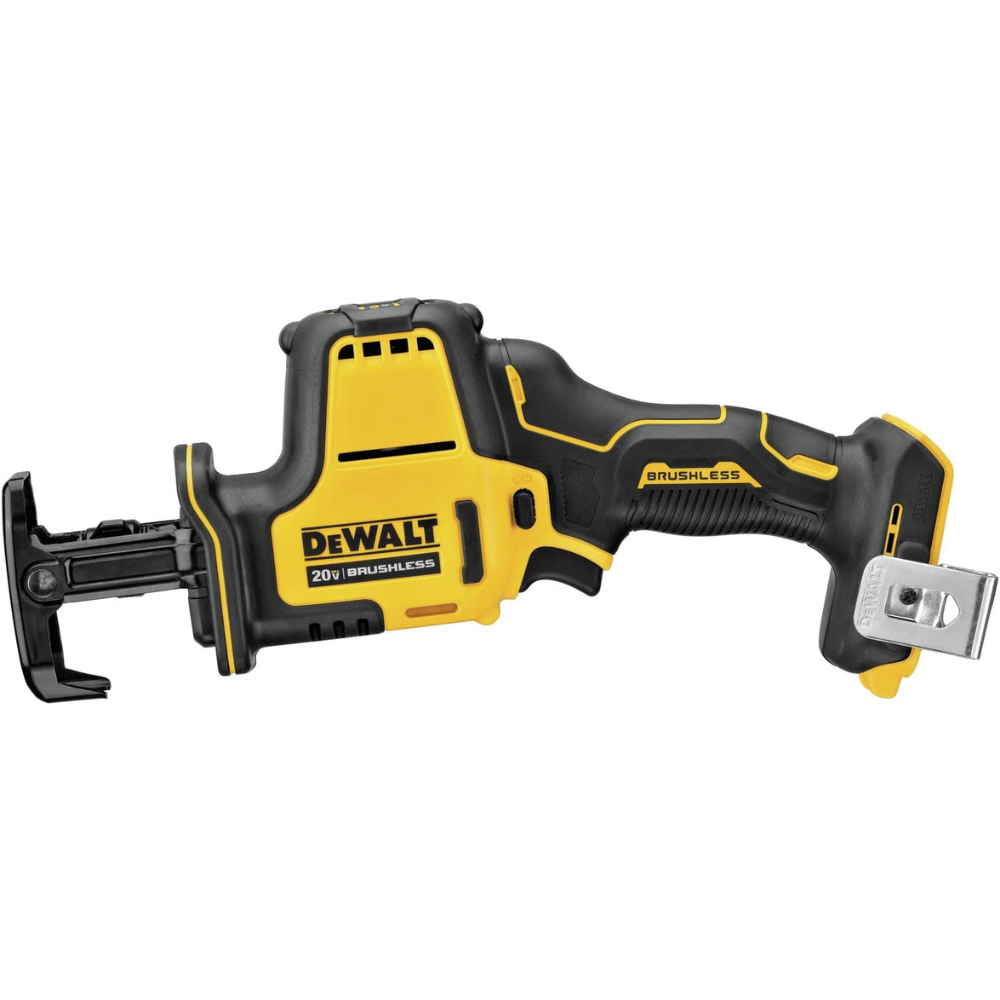
Key Features
- Uses DEWALT 20V Lithium-Ion battery (bare tool)
- 2,800 SPM
- 5/8″ stroke length
Why It’s a Great Choice
Introducing the DEWALT ATOMIC 20V MAX* One-Handed Reciprocating Saw!
It’s one small saw with a huge performance.
Now, you can take on those tough DIY and professional jobs with ease thanks to its lightweight and compact design.
This saw measures only 12.5 inches from front to back and is 37% lighter than the DCS367 Compact Reciprocating Saw, so it’s easy to maneuver in tight places.
Plus, its powerful brushless motor delivers increased performance and runtime that will have you zipping through material quickly.
To make sure that you don’t have any trouble cutting in dimly lit locations, this reciprocating saw has an LED light that comes in handy for illuminating dark work spaces.
And when you’re done cutting all day long, blade changes can be taken care of swiftly and easily with the tool-free blade release system.
You also get speed variation control with the variable speed trigger as well as multiple points of contact with the pivoting shoe.
After all these features are combined, you get one Atomic machine that works harder than ever before!
Buyer’s Guide to the Best Reciprocating Saws
Are you curious about the world of cordless reciprocating saws?
Do you have burning questions about the best blades, battery life, or how to avoid accidentally cutting off your own finger?
Well, fear not, because we’ve got you covered.
Our team of tool experts has compiled a comprehensive list of FAQs about cordless saws that will satisfy even the most inquisitive minds.
We’ve scoured the depths of the internet and consulted with the finest saw-wielding gurus to bring you the most enlightening and entertaining answers to all your burning questions.
So buckle up, put on your safety goggles, and prepare to have your mind blown by the world of cordless saws.
What are the key features to look for when buying a cordless reciprocating saw?
When buying a cordless reciprocating saw, there are several key features to consider:
- Power: The power of the saw is important, as it will determine how quickly and efficiently you can cut through various materials.
- Battery life: Since cordless saws rely on batteries, it’s important to consider the battery life of the saw. Look for a model with a battery that can last long enough to get your job done without having to stop and recharge.
- Blade stroke length: This refers to the length of the back-and-forth motion of the blade. Longer stroke lengths can cut through thicker materials, but shorter stroke lengths are better for precision work.
- Blade change system: Look for a saw with a tool-free blade change system, as it will make it quicker and easier to swap out blades.
- Variable speed: A saw with a variable speed feature will allow you to adjust the speed of the blade, which can help cut different materials.
- Ergonomics: Look for a saw with a comfortable grip and good balance, as it will make it easier and less fatiguing to use.
- Weight: A lighter saw will be easier to handle and maneuver, especially if you need to use it for extended periods.
- Durability: Look for a saw that is well-built and made from quality materials, as it will last longer and be more reliable in the long run.
- Vibration control: Look for a saw with some kind of vibration control for reduced fatigue if you’re going to be using it for long periods.
What are the different types of blades available for cordless reciprocating saws, and what are they best suited for?
There are several different types of reciprocating saw blades available for cordless models, each suited for specific types of cutting:
- Wood blades: These are the standard reciprocating saw blades. They have larger teeth and are designed to quickly cut through wood and other soft materials.
- Metal blades: These blades have smaller, finer teeth and are designed to cut through metal and other harder materials.
- Demolition blades: These blades have larger teeth and are designed to cut through thick, heavy-duty materials like nails, screws, and even concrete.
- Pruning blades: These blades have large teeth with wide gaps and are designed for cutting through thick branches and other vegetation.
- Fine-tooth blades: These blades have small, closely spaced teeth and are designed for making precise cuts in materials like metal or plastic.
- Specialty blades: There are also specialty reciprocating saw blades available, such as flush-cut blades, which are designed for cutting through materials flush against a surface.
When choosing a blade, it’s important to consider the type of material you will be cutting, as well as the thickness of the material. It’s also important to choose a blade with the right length and teeth per inch (TPI) for the job at hand.
Can I use my cordless reciprocating saw for cutting metal, wood, or both?
Yes, cordless reciprocating saws can be used for cutting both metal and wood, and some models can even be used for other materials like plastic, drywall, and masonry. The type of blade you use will depend on the material you are cutting, and it’s important to choose the right blade for the job to ensure efficient and safe cutting. For example, if you are cutting through wood, you’ll want to use a blade with larger teeth that can quickly remove material, while for metal, you’ll want a blade with smaller, finer teeth that can make precise cuts without getting stuck or damaged. It’s also important to adjust the speed of the saw to match the material you are cutting, as different materials require different cutting speeds for optimal results.
What is the battery life like on a cordless reciprocating saw, and how long does it take to charge?
The battery life on a cordless reciprocating saw can vary depending on the model and the type of battery used. Typically, a cordless reciprocating saw will have a battery life of anywhere from 20 minutes to an hour of continuous use. However, many saws come with additional batteries, so you can swap them out as needed to keep working.
The charging time for a cordless reciprocating saw can also vary depending on the model and the battery. Most reciprocating saws take between 30 minutes to a few hours to fully charge, but some models may take longer. It’s important to follow the manufacturer’s instructions for charging the battery to ensure that it is charged properly and safely.
Are cordless reciprocating saws more expensive than corded ones?
Generally speaking, cordless saws are more expensive than their corded counterparts. This is because cordless saws require batteries and charging technology, which adds to the cost of manufacturing. Additionally, cordless saws are often designed with more advanced features like variable speed control, quick blade change systems, and ergonomic grips, which can also add to the cost.
However, the price difference between cordless and corded reciprocating saws can vary depending on the brand, model, and features. In some cases, a cordless reciprocating saw may be priced similarly to a corded model, so it’s important to compare different options to find the best value for your needs. Ultimately, the decision to choose a cordless or corded reciprocating saw will depend on your budget, intended use, and personal preferences.
What safety precautions should I take when using a cordless reciprocating saw?
Cordless reciprocating saws are powerful tools that can be dangerous if not used properly. Here are some safety precautions to keep in mind when using a cordless reciprocating saw:
- Always wear safety glasses or goggles to protect your eyes from flying debris.
- Wear ear protection if your saw is particularly loud or if you will be using it for an extended period.
- Wear gloves to protect your hands and improve your grip on the saw.
- Keep the blade guard in place when the saw is not in use.
- Make sure the blade is properly installed and tightened before use.
- Use the right blade for the material you are cutting.
- Secure the material you are cutting with clamps or a vice to prevent it from moving.
- Keep your hands and fingers away from the blade at all times.
- Turn off the saw and unplug the battery before changing blades or performing any maintenance.
- Be aware of your surroundings and make sure no one is in your cutting path.
- Store the saw in a safe and dry place when not in use.
By following these safety precautions, you can help prevent accidents and injuries while using your cordless reciprocating saw.
Can cordless reciprocating saws be used for precision cuts, or are they better suited for rough cutting?
Cordless reciprocating saws can be used for both precision cuts and rough cutting, depending on the blade and the technique used. While they are often used for rough cutting because of their power and speed, they can also be used for more precise cuts with the right blade and a steady hand.
For precision cuts, it’s important to use a blade with smaller teeth that can make smoother and more controlled cuts. You may also want to use a slower speed setting on your saw to allow for more control. Additionally, using a guide or jig can help you make more precise cuts, especially for intricate or curved cuts.
Ultimately, the versatility of a cordless reciprocating saw means that it can handle a variety of cutting tasks, from rough demolition work to more delicate precision cuts, making it a useful tool to have in your arsenal.
Can cordless reciprocating saws be used for demolition work, such as cutting through walls or pipes?
Yes, cordless reciprocating saws are excellent for demolition work, such as cutting through walls, pipes, nail-embedded wood, and other materials. The powerful motor and fast cutting action of a reciprocating saw make it ideal for rough cutting tasks, such as demolition work.
When using a cordless reciprocating saw for demolition work, it’s important to use the right blade for the job. Blades with larger teeth and a more aggressive design are better suited for rough cutting tasks like demolition. Additionally, you should always wear the appropriate safety gear, such as gloves and eye protection, and be aware of your surroundings to prevent accidents or injuries.
Overall, cordless versions are versatile tools that can handle a variety of tasks, including demolition work, making them a valuable addition to any toolkit.
What is the maximum cutting capacity of a cordless reciprocating saw?
The maximum cutting capacity of a cordless reciprocating saw varies depending on the brand and model, as well as the blade being used. In general, most reciprocating saws can handle cuts up to 6 inches in depth for wood and 1/2 inch for metal.
However, some models may have larger or smaller cutting capacities, so it’s important to check the specifications of your particular saw before attempting any cuts. Using the right blade for the job can also affect the cutting capacity of your saw.
It’s worth noting that while cordless reciprocating saws are powerful and versatile tools, they may not be the best option for extremely heavy-duty cutting tasks. In those cases, a more specialized tool may be required.
Choosing the Best Cordless Reciprocating Saw for You
If you’re in the market for a cordless reciprocating saw and still not sure which one is best for you, we hope this post gave you the guidance and confidence to make an informed decision.
We wish you luck with your shopping journey and are sincerely grateful for taking the time to read this article.
Be safe and confident while wielding your new tool!
So what are you waiting for?
Click the links to check prices on Amazon and order yours now.
Who knows?
You might even win the race against your friends when it’s time to get some home repairs done!


